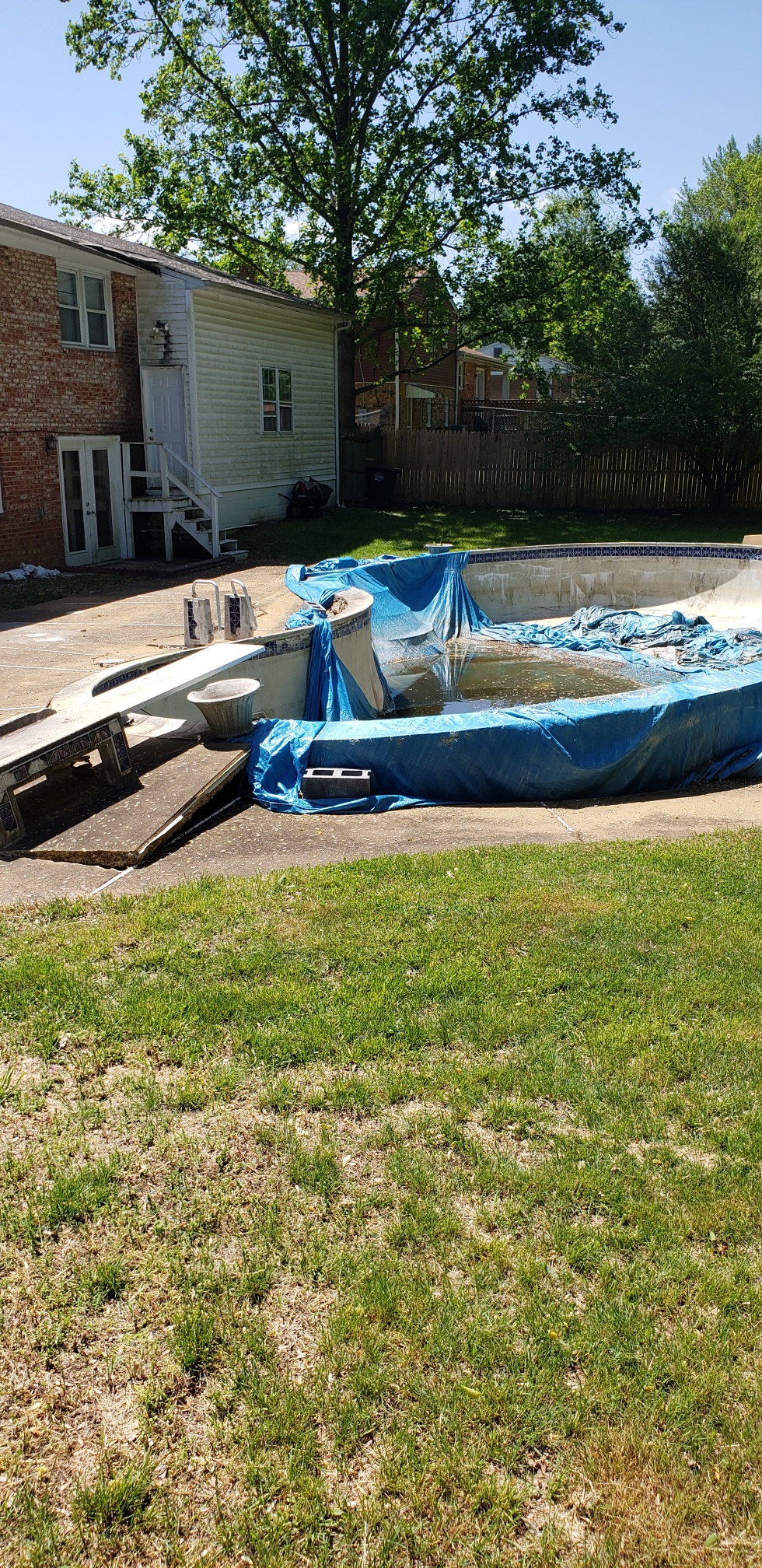The cost of demolishing and removal of an inground pool can vary. Several factors contribute to removal cost fluctuations. Factors include the size, type of materials, and accessibility to the site play a huge. As with all home services, how much to remove a pool, will vary based on your location. If you live in a city with a high cost of living, expect to pay more. Whether your project costs $2,000 or $20,000 depends upon several key factors. Let’s take a quick look at a few of these and discuss how to maximize your savings.
Types of Inground Pool Removal
The 2 types of inground pool removal options are total pool removal and partial pool removal. We will speak to both of this options.
- Total inground pool removal, requires heavy equipment. Heavy equipment will be used to demolish the existing pool concrete. The pool steel reinforcement can be 3/8″ to 1″ thick. Thick steel and concrete demands the use of heavy equipment. Heavy equipment will use hydraulic hammers to breakdown the concrete. Broken concrete allows for the removal of the concrete material from the ground. Concrete can now be loaded into dump trucks. Concrete with rebar is expensive to haul off and dispose of. You can understand broken concrete with steel can be of little use to others. To reclaim this material into something into a useful sellable material requires expensive equipment and time. This adds to the expense of a total pool removal. This is complete removal of all inground pool items.
- Partial pool removal involves heavy equipment, lighter in nature. This process includes the installation of holes at the bottom of the existing pool. The breakdown of the pool edge will ensure a successful project. Dirt Connections breaks down the swimming pool edge 36 inches below the existing grade or pool coping. The depth of 36 inches allows for plenty of safe ground cover grading over the partial pool removal.
Cost Factors
Size
It’s no surprise that a bigger pool costs more to remove than a smaller pool. The larger the pool, the more work. You will have more pool construction materials to dispose. With demolition complete, you now need to bring in more backfill material for the filling and grading of the pool. This additional work adds to the labor costs. Increased labor costs add to the overall removal costs. With increased labor costs, debris removal, dirt/gravel costs, and machinery, always add to overall project costs.
Type of Materials
Accessibility
6 Reasons for Pool Demolition
 For several Individuals, especially those who live in hot climate areas, a backyard swimming pool might look like an excellent way to enhance one’s living. A swimming pool can also be an obnoxious liability, and some Individuals sometimes see a pool as a big pit filled with water that’s siphoning their free time and money. So, there comes the point when such people consider demolishing the pool and filling the hole. Below are six reasons why Individuals consider pool demolition and removal.
For several Individuals, especially those who live in hot climate areas, a backyard swimming pool might look like an excellent way to enhance one’s living. A swimming pool can also be an obnoxious liability, and some Individuals sometimes see a pool as a big pit filled with water that’s siphoning their free time and money. So, there comes the point when such people consider demolishing the pool and filling the hole. Below are six reasons why Individuals consider pool demolition and removal.
1) To Save Money
A swimming pool can factor into the amount you’ll be required to pay in property tasks, for utilities, and homeowner’s insurance. Pool owners may also have to dole out cash for the monthly cleaning and maintenance of the pool, including checking the filter and pH level. And you shouldn’t forget the cost of repairs.
2) Easier to Sell a Property
An old pool on a property can scare potential buyers off. Pool removal companies get several queries from real estate owners, urging them to discard the pool before the property is put up for sale. The cost of demolishing a pool and concrete breakout can affect the value of the property.
3) The Nest is Empty
If the kids aren’t around and the Grandkids are the only ones enjoying the pool, most older pool owners wouldn’t want to spend money and time maintaining such a pool. Even if they have the money in abundance, retirees who cherish traveling don’t want to be troubled with taking care of a pool year-round when they are not at home. Also, pools that are neglected aren’t only a displeasing sight, and they can also become breeding grounds for mosquitoes that are responsible for transmitting malaria.
4) To Get More Backyard
A pool constructed at the center of the backyard occupies space that could be used for other significant things such as a mini football field or can be used to play fetch in the dog game. In most states, a pool that isn’t heated is only utilized for some months. Alternatively, homeowners can enjoy the fun of having a vast expanse of land to themselves.
5) Safety
Most parents with little children consider the backyard pool as a safety hazard and not a haven for relaxing. Unfortunately, it is quite sad that small children ranging from ages 2-4 are prone to drowning, all that is needed is a little distraction from the adult for a little child to end up in the swimming pool. To rid your mind of thoughts as such, you should consider demolishing that pool of yours.
6) Renovation Cost
Renovating an old pool is quite expensive. It usually is inexpensive to demolish the pool rather than refurbish it. Sometimes, if an old pool requires refurbishing, it is ideal to erase the idea and go for installing a new one.
How to Prepare For Pool Removal
The proper preparation on your part for the pool removal can speed up the process of removing a pool and make it easier overall. Since most people have never had a pool removed before, it is common for customers to have a lot of questions about what they should be doing to get their house and yard ready for a pool removal. In this article we will explain everything that should be doing, and why.
Inground Pool Removals
Because the process for removing an inground pool is more involved, the cost typically begins at around $5,000 for a partial removal and $20,000 for a full removal, which entails removing the entirety of the pool structure instead of just the top 36 inches. In both cases, the process begins by draining the water from the pool and making holes in the bottom before tearing down all or some of the pool structure. The cavity can then be filled in with fill dirt and compacted.
Fiberglass and vinyl pools are generally less expensive to remove because these materials can easily be cut and removed from the area. Concrete and gunite are heavier materials that need to be broken down with special equipment, making pools with these elements more expensive to remove.
Summary
As a recap, several factors contribute to pool removal costs. These factors include the size, type of materials, and accessibility to the site play a huge. These removal costs will vary based on your location. If you live in a city with a high cost of living, expect to pay more. Your pool removal project costs can $2,000 or $20,000. That said, always get three estimates. Weigh all your options and make the best decision for you and your family.














































